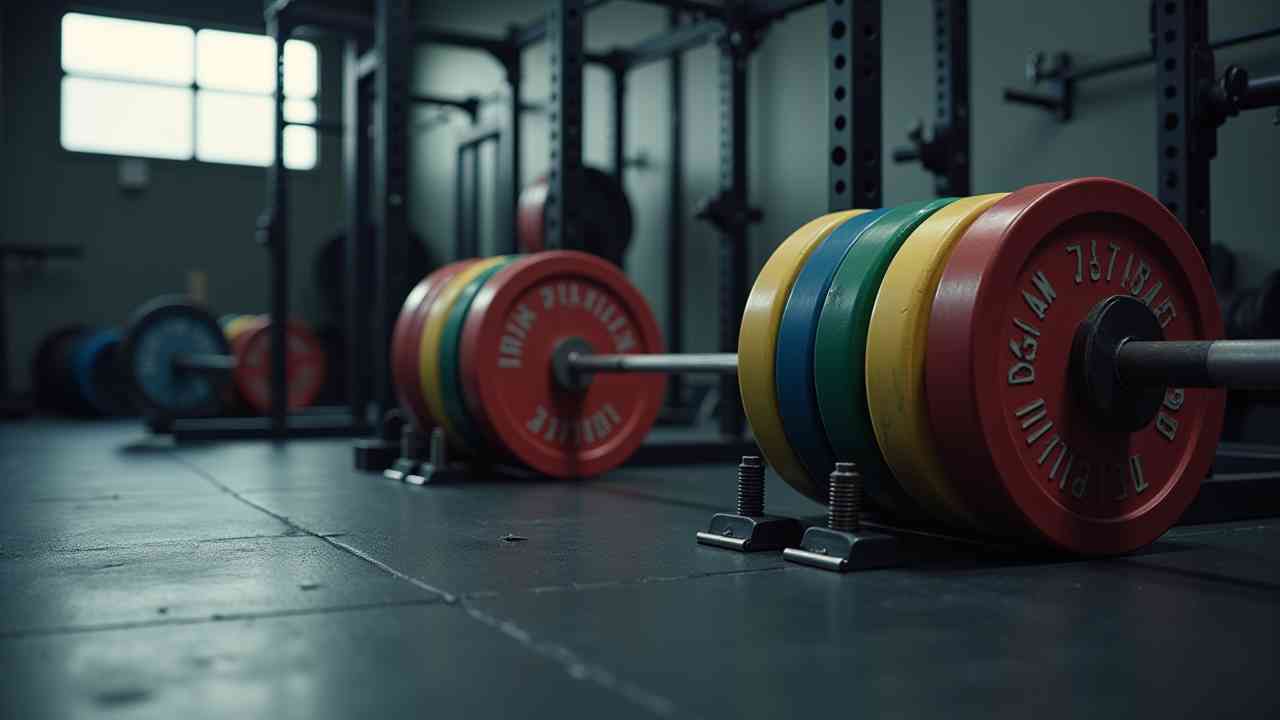
Weights and Bar: A Complete Strength Training Guide 💪🏋️
The Foundational Role of the Barbell System
The barbell, combined with weight plates, is the single most effective tool for developing total body strength and muscle mass. No other equipment allows you to handle as much weight safely. Barbells are the non-negotiable foundation of resistance training programs across the world 🏋️.
Using a barbell ensures progressive overload. This is the principle of continually increasing the resistance. This constant challenge is essential for muscle hypertrophy (growth) and boosting bone density 📈. The barbell forces multiple major muscle groups to work simultaneously.
Defining the Equipment
The standard barbell used in most gyms is the Olympic barbell. It typically weighs 20 kg (44 lbs) for men and 15 kg (33 lbs) for women. The weight plates loaded onto the bar are secured with collars or clamps. Always include the weight of the bar in your total lifting calculation ⚖️.
Compound Lifts: The Big Three Exercises
Barbell training revolves around compound movements. These exercises use multiple joints and large muscle groups, leading to maximum strength and calorie expenditure. The 'Big Three' are essential for a powerful physique.
1. The Barbell Back Squat
The squat is often called the 'King of All Exercises.' It primarily targets the large muscles of the lower body. This includes the quadriceps, hamstrings, and glutes. It also builds crucial core and lower back stability. Mastering proper form with an unloaded bar is the first step to prevent injury 🦵.
2. The Barbell Deadlift
The deadlift is a hinge movement that works the entire posterior chain. This exercise targets the glutes, hamstrings, traps, and back muscles. It is the best exercise for developing raw pulling strength and functional power 🚀. Focus on maintaining a flat, neutral back throughout the lift.
3. The Barbell Bench Press
The bench press is a compound push movement performed lying down. It primarily targets the chest (pectorals), triceps, and shoulders. This lift is a benchmark for upper body strength development. Always use safety spotter arms or a reliable human spotter for this exercise.
Other critical compound lifts include the Overhead Press (shoulders) and the Barbell Row (back), ensuring balanced muscle development.
Understanding Weight Plates and Safety
The type of weight plates you use depends on your training style and safety needs. Plates come in two main materials: iron and rubber.
Iron and Steel Plates
Traditional iron or steel plates are common in most gyms. They are thin and generally less expensive. These plates are not designed to be dropped from height. They should be used for slow, controlled movements like presses and rows.
Bumper Plates (Rubber)
Bumper plates are made of dense, solid rubber. They are essential for Olympic-style lifting (Snatch and Clean & Jerk). These plates are specifically designed to be safely dropped onto the gym floor 💥. Bumper plates are color-coded by weight for easy identification during fast-paced workouts.
The Key to Progress Progressive Overload
Your ultimate success in weight training depends on consistently applying progressive overload. You must increase the demand placed on your muscles every week to force adaptation.
Tracking and Increasing Resistance
Track your workouts meticulously. Once you can easily complete your target set and rep range (e.g., 3 sets of 10 reps), increase the load. Use fractional plates (small weights of 0.5 lbs or 1 lb) to make tiny, safe jumps in weight. This prevents plateaus and ensures long-term strength gain 🌟.